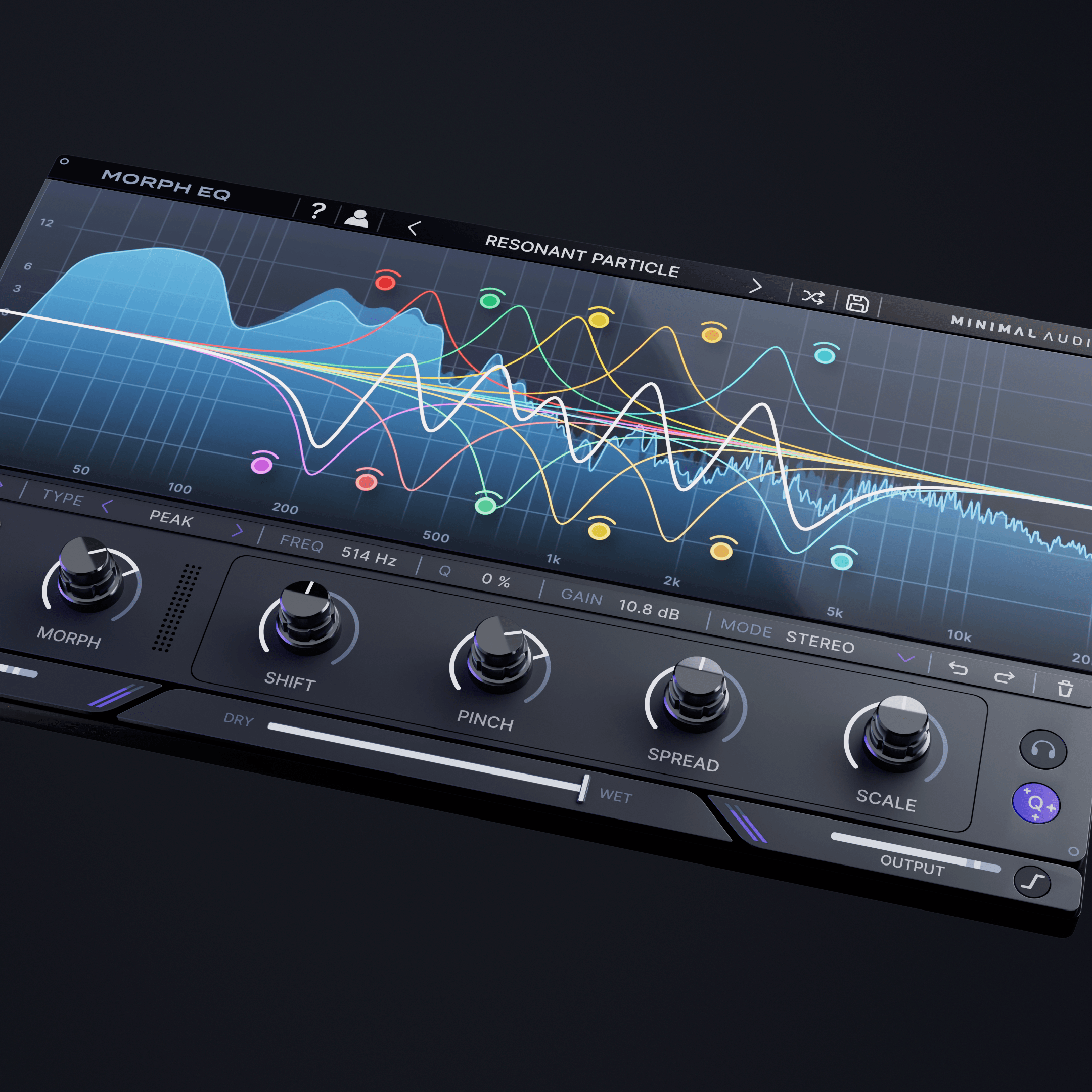Hey everybody it’s Jake T. with Minimal Audio and I’m so excited for this latest entry into our blog because we’re talking about one of my favorite plug-ins ever made. I’ve yet to encounter any other audio effect that remotely comes close to this one’s versatility in virtually any productional context. Its ability to shift the sound of an instrument into exciting and inspirational frontiers is unparalleled. This week it is my great honor to take you on a tour of Morph Eq: the masterclass in modulation straight from the minds over at Minimal Audio.
Morph Eq is a singular voice in the world of equalization. This is accomplished by its two distinct features: one its ability to create infinite nodes of eq across the frequency spectrum of your source signal, and two its unique integration of modulation into those nodes. This allows you to animate your sounds; morphing and mangling them into shapes and forms previously unimagined. It’s truly staggering how much one can do with a plug-in like this, and if you can’t tell already; I’m brimming with excitement to get under the hood of this effect!
It All Equals Out
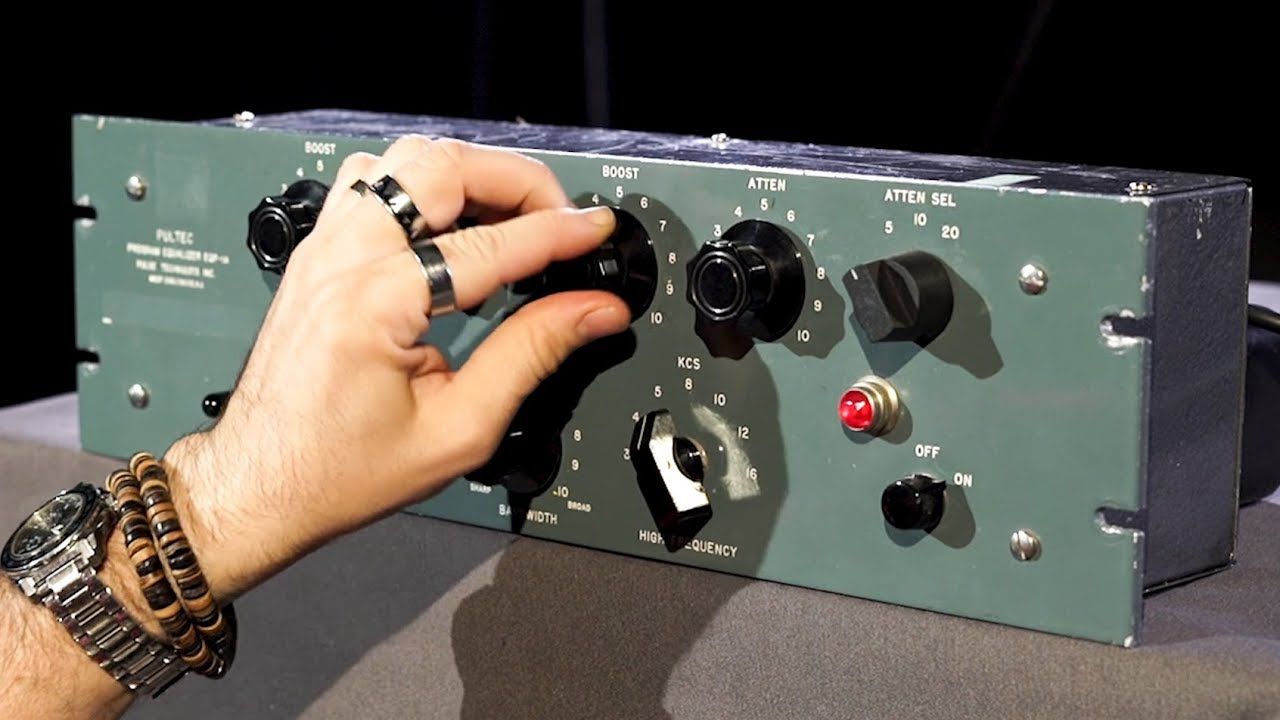
First, let's take a closer look at some of the context surrounding EQ. What started as crude tone control devices have blossomed into sophisticated tools for sound surgery, and highlighting its innovations shines a light on just how special Morph Eq is.
The concept of manipulating sound frequencies can be traced back to the early 20th century. In the 1900s, basic tone controls were used to adjust bass and treble levels in early sound systems. It wasn’t until the 1940s that engineers began developing more complex filter circuits. These circuits would go on to lay the groundwork for EQ in the future.
Getting a Little Graphic

Fast forward about ten years into the 1950s and we start to witness the emergence of the graphic eq. This was the first equalizer to use a series of fixed bands to visually represent the frequency spectrum. By using a slider to control each of those bands, engineers could precisely adjust the levels of different frequencies in a sound. Thanks to the advent of the transistor and integrated circuits, graphic equalizers became smaller and more complex. Eventually leading to…
Parametric Powerhouse

The 1970s Brought about a significant shift with the introduction of parametric equalizers. Unlike graphic EQ, parametric equalizers offered precise control over the frequency range, bandwidth, and amplitude of a sound source’s frequency. Engineers could isolate and manipulate those specific frequencies, making it an invaluable tool for recording studios and live performances.
An Era Defined Digitally
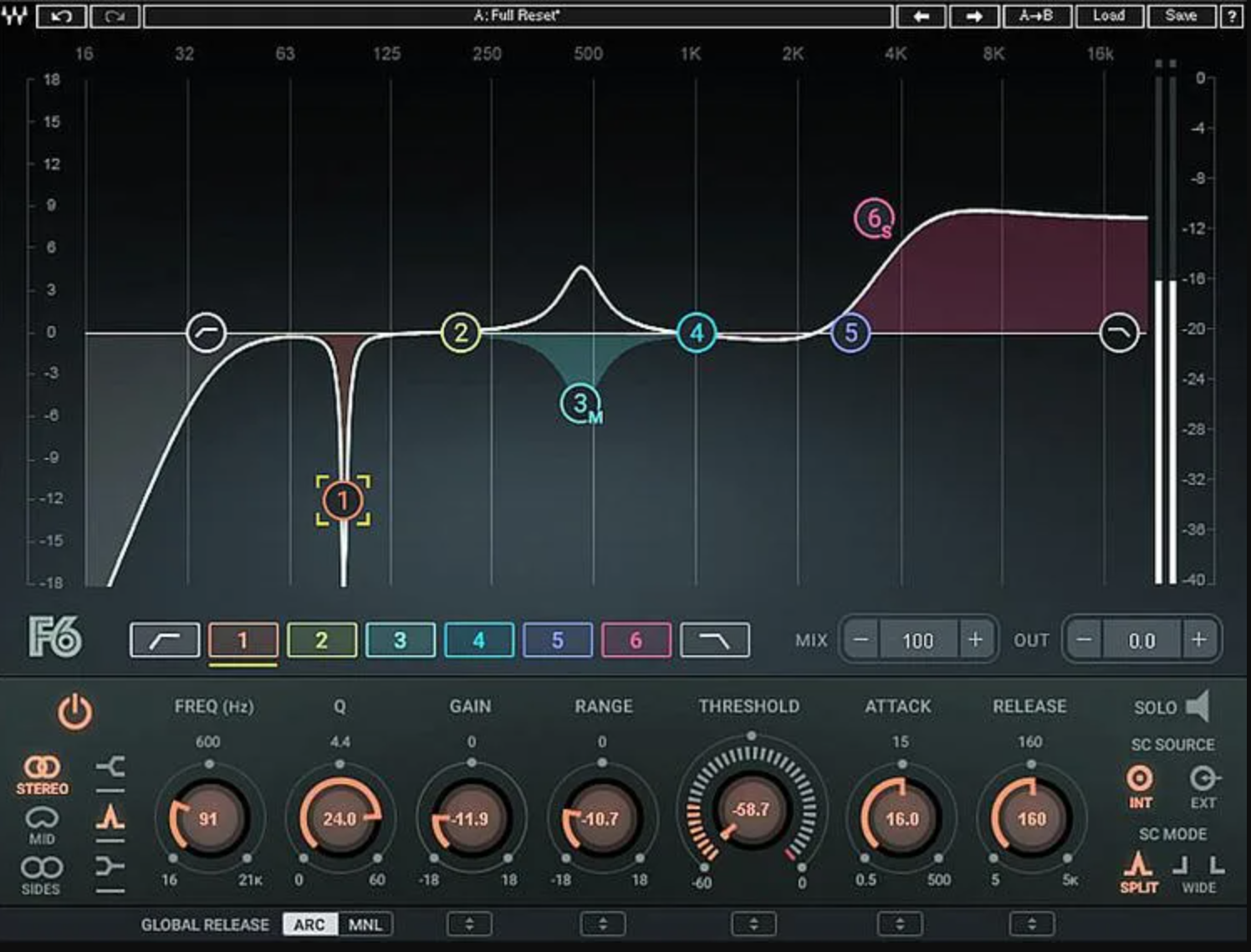
The digital revolution of the late 1980s and early 90s transformed the audio landscape. Hardware-based equalizers were gradually replaced by software-based solutions, allowing for unprecedented control and flexibility. Digital audio workstations (DAWs) provided an array of EQ plugins, emulating the characteristics of analog hardware and introducing new possibilities for audio manipulation.
From its humble beginnings as a simple device to control the tone of a sound to its current state as an indispensable part of any studio. The history of EQ has witnessed remarkable advancements. All of these have served to revolutionize the way sound is shaped in the modern recording studio.
Exploring the Depths
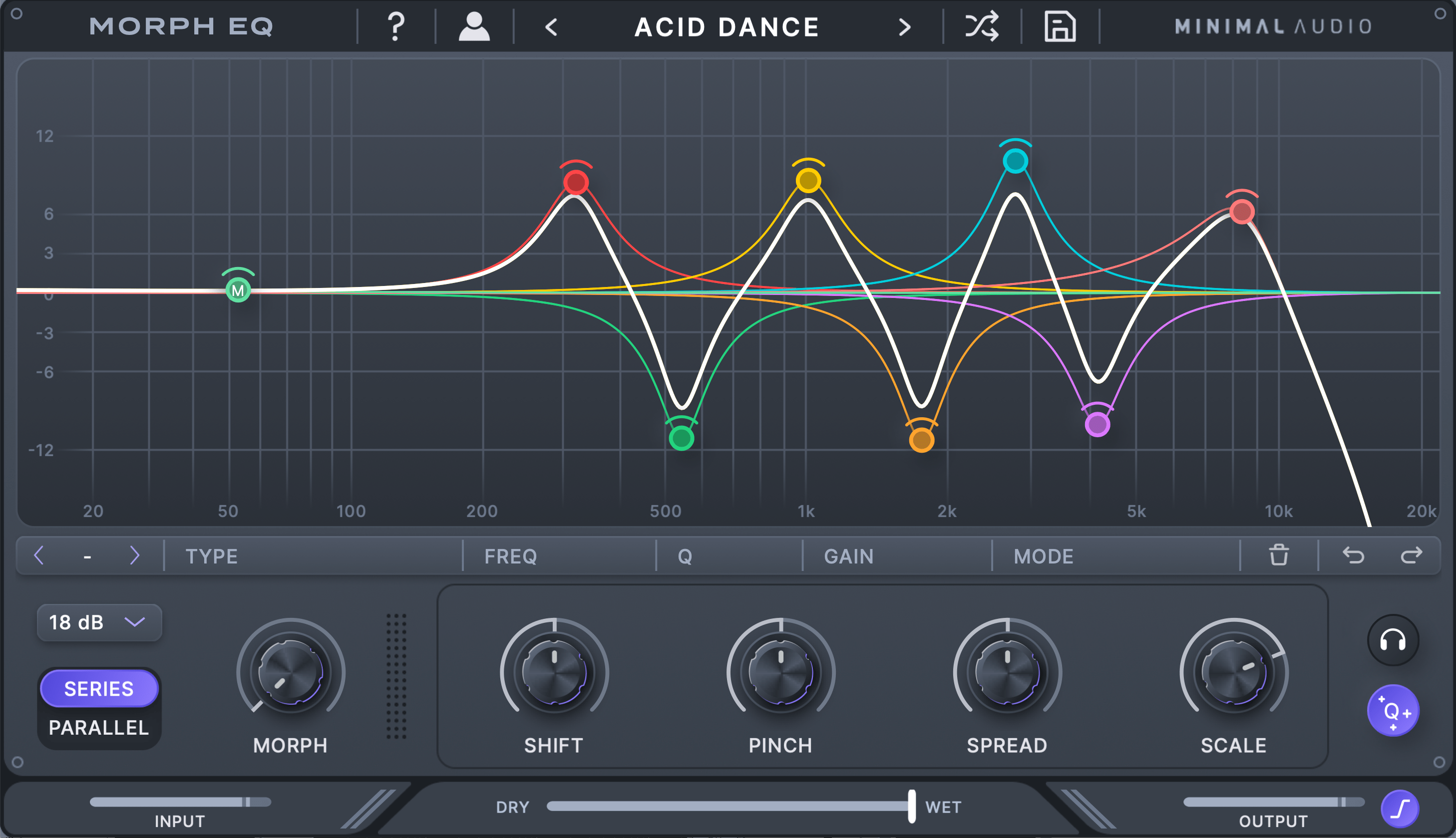
Now that we’ve taken a look at the history of the effect as a whole, let's shine a light on Morph Eq itself. This is a plug-in positioned uniquely in its class due to the effect’s fresh approach to equalization as something that can be used to make a sound stand out, rather than a tool used to carve them into a mix. While Morph Eq can give any parametric Eq a run for its money, experienced sound designers will immediately notice the equalizer’s filter-like ability to shape sounds as something truly original in the world of equalization. And since this is a plug-in from Minimal Audio the more time you spend with Morph Eq, the more you’ll be rewarded for exploring the effect’s gargantuan depths. So without further delay, let's explore some of those depths together to see what makes Morph Eq so inspiring.
The Eq
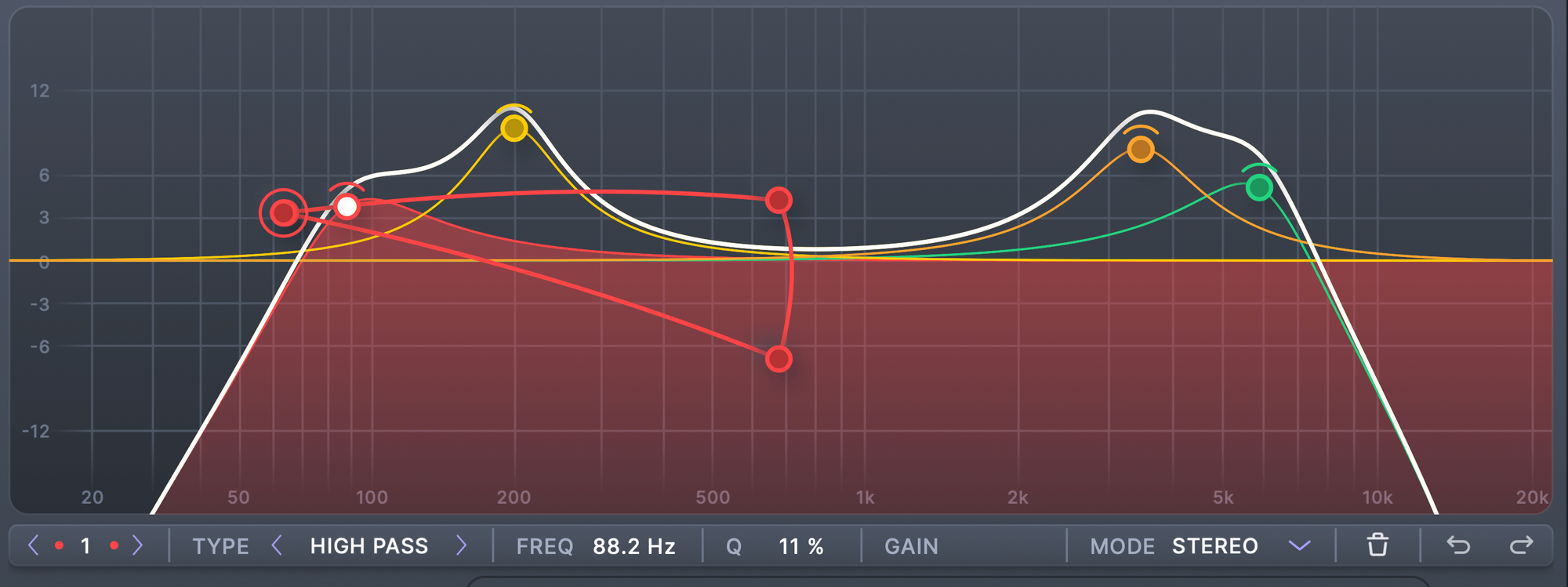
To begin we’ll take a look at the “eq” part of Morph Eq. When you open the plug-in the first thing you’re likely to notice is the classic parametric eq that you’ll probably already have some familiarity with. In that eq area, you can double-click anywhere on the effect’s spectral graph and a new point of equalization will be created. It’s here that you can click and drag that point to adjust the gain and frequency of your node.

Underneath the spectral graph, you’ll notice a toolbar that allows you to adjust the different parameters of your eq point. It’s in this bar that you can change the filter type of your node, manually input specific values for that node’s frequency, gain, and queue, and most interestingly select the routing mode for that point. These routing modes include left, right, stereo, mid, and side, allowing you to make decisions for your mix on a point-by-point basis. This is incredibly beneficial when you have a complicated sound that takes over a large amount of your frequency spectrum. Now you can be even more surgical with your cuts instead of having to make broad decisions that diminish the impact of the composition that you’re creating.
Additionally, Morph Eq implements some welcome quality-of-life features into that same toolbar. These are buttons that allow you to cycle through each of your eq points as well as undo, redo, and delete those points that aren’t working for you anymore. It’s also worth noting that everything that you can do in this toolbar can also be accomplished through hotkeys, and right-click context-sensitive dropdown menus.
Modulation Path
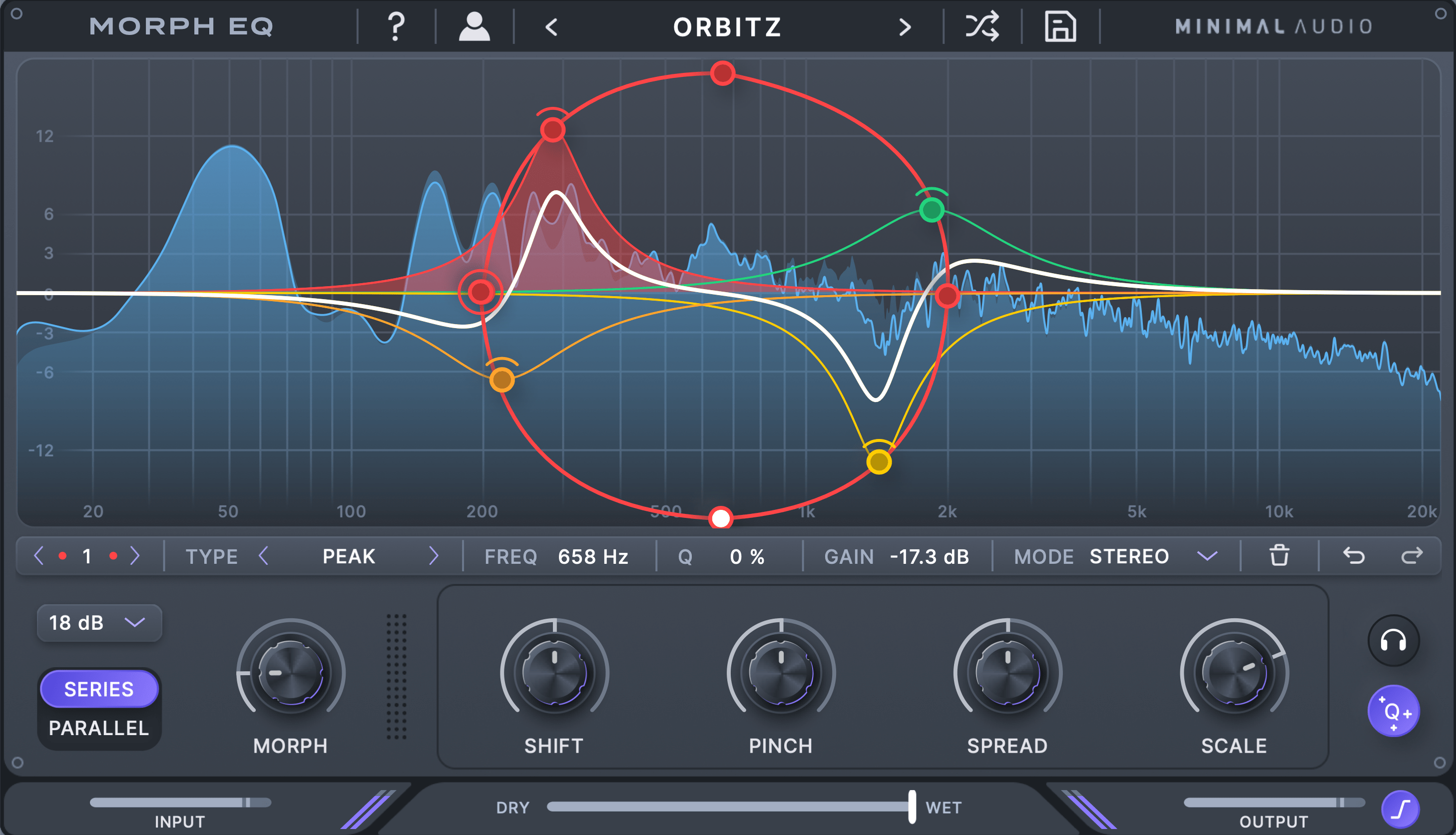
Now that we’ve covered the more conventional aspects of Morph Eq, let's examine the features that elevate the plug-in into a league of its own. Namely, we’ll talk about the effect’s morph paths and modulation. Once you have created a point in Morph Eq, you may notice a ring that outlines the filter point. As you drag your cursor over that ring, you’ll find that your cursor shifts into a crosshair. This indicates that you are now able to create a morph path. Click and drag your cursor to create a new line and point, and your filter (with input from the plug-in’s morph knob) will follow the path you’ve created, warping your sounds all across the frequency spectrum.
You can curve these lines as well, making for more expressive gestural movements than just a filter sweep. You’ll notice that as you hover any point in the eq that has a hat, you can preview its morph point. Create as many of these points as you like, and watch as your sound shifts into complex unimagined territories. All of this functionality is amazingly animated by the plug-in’s Morph knob. The morph knob controls how far your filters will travel down their morph paths. It’s important to note that the morph knob controls all of your eq points at once to give Morph Eq its signature shifting sound.
Macro Knobs

Now, let's take a look at Morph Eq’s macro section. Along the bottom row of the plug-in, four macro knobs add a layer of expressive control over your sound. We’ll use this section to explore them. Shift, allows you to move all of your filters and eq in relationship with each other over the whole of the eq. This makes the knob behave like a cutoff knob for the entire effect. Next, we have Pitch that compresses or expands the eq closer to the center of the frequency spectrum. This is particularly helpful when creating formant-like vowel sounds. After that, we have which offsets the left and right channels of your sound while in stereo mode. And finally, we have Scale, which boosts or inverts the resonance of all of your filters at once.
In the desert of endless analog emulating equalization plug-ins, Morph Eq stands as an oasis of creativity. Minimal Audio strives to be a company that supports rather than dictates the artist’s workflow, and Morph Eq is yet another stunning example of that ethos. This is a plug-in that can exist in the context of any genre because it is a novel take on a universal tool. The rare eq that can add as much as it subtracts. It is a plug-in that can stand next to any other parametric eq on the planet, but can also recontextualize that equalization through its ability to animate its filter points. It’s a plug-in that pushes a sound to the point that it blurs the line between instrument and effect. While remaining so simple and inviting to use, people who are new to producing can experiment and have fun with it as well. This is what makes Morph Eq a triumph in the world of equalization, and yet another must-have tool from Minimal Audio.
If you also feel touched by the spirit of this tool for spectral shifting modulational mayhem then consider pressing the button below to purchase Morph Eq and see what it can do for you!


